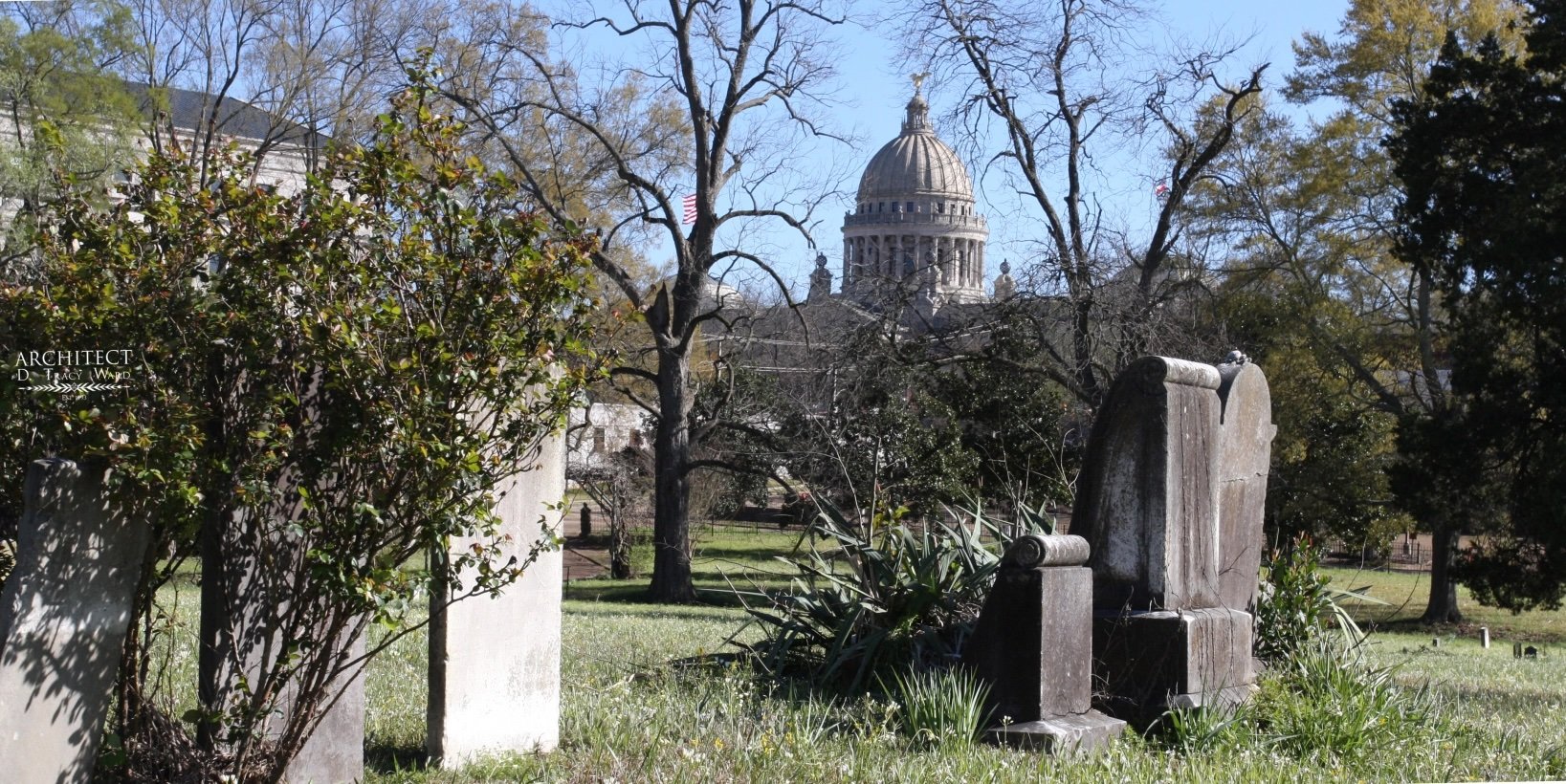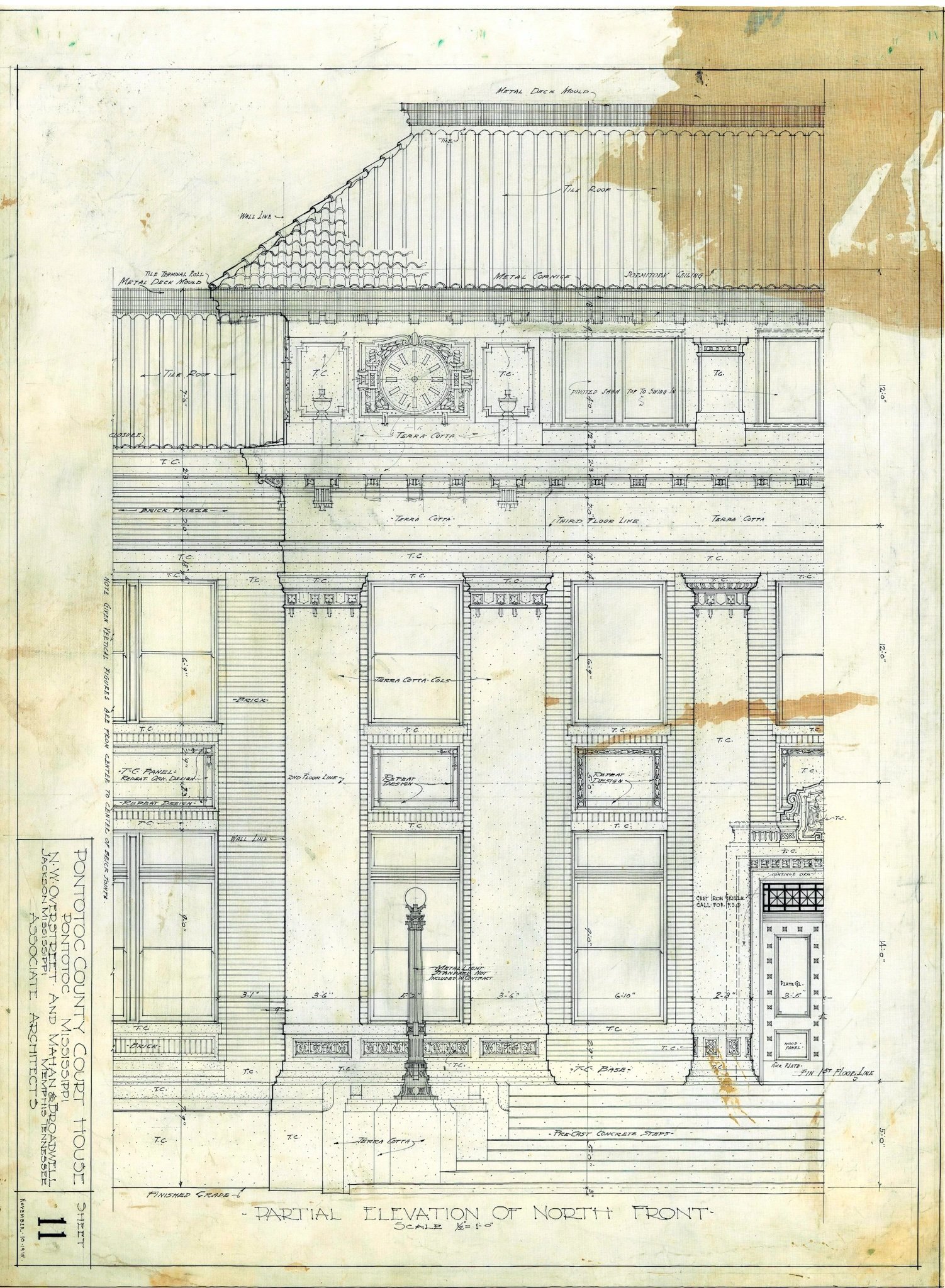Historic Courthouse Architecture (Part II)
Our book series about County Courthouses of the Southeast U.S.
(Note: this article gathers my notes and talking points for a presentation at the Historic Courthouse in Decatur, Georgia on March 7, 2020 in association with the Southeast Chapter of the Institute of Classical Architecture & Art.)
“History repeats itself. It has to. No one is listening.” — Steve Turner
Our publications are all about the history of a unique and special place – the county courthouse. Books on county courthouses can be found… even one beautiful production that came out recently about Georgia’s courthouses. But these publications tend to be snapshots of only current conditions. My personal opinion is a disinterest in most examples from the past 40-50 years. We wanted to go further back in time and pull out postcards and archived images of what came originally. We wanted to know the history of these people and places. The quote above from the English writer Steve Turner is a sarcastic reference to our human tendency to mistakenly repeat the blunders of the past. But if there is any aspect of history worth repeating … it’s the great architecture of our forefathers!
Marshall County – Holly Springs, Mississippi – photo D. Tracy Ward
Psalm 9:1 – “I will give thanks to the Lord with my whole heart; I will recount all of your wonderful deeds.”
To “recount” history is to remember, recall, recollect, or reminisce the things of the past. It’s simply good and healthy – and fun – for us to remember and memorialize the events and people who came before us.
Greenwood Cemetery in Jackson, Mississippi – photo D. Tracy Ward
The image above – I was recently asked to join the Board of advisors for the historic Greenwood Cemetery in downtown Jackson, Mississippi. We’re working to restore this urban park space (its memorials, its plantings, its safety, its reputation & status in the community) and tell the stories buried within. In fact, one of the board members has spent years researching a handful (via random selection) of persons buried here and published the collection of their fascinating life stories. We all have them and each of us spends this short life creating and recalling … our own unique and individual story – our legacy. Architects, designers and draftsmen seal their legacy in pen and paper – see below.
courtesy of Special Collections Dept. at MS State University
This image above is a cropped view of a 1915 construction documents page of a courthouse in Pontotoc, Mississippi. The architect was one of Mississippi’s most famous – Mr. Noah Webster Overstreet. In 1915, his firm’s drawings were just as fantastic as the built product. Just stare at that artistry and eye-to-hand coordination! CAD drawings just can’t do that.
N.W. Overstreet (1888–1973) was a prolific architect in Mississippi during the early 20th century. He was the first registered architect in the State and is credited with over 900 buildings in his 50+ year career span – an amazing accomplishment. He designed many beautiful courthouses and other civic structures that remain standing today.
Jefferson County is represented in the MS book, and I share this postcard view because it gives a glimpse of the research results which often revealed fascinating side stories wrapped into and around this subject matter. This was once a prosperous part of the wealthy cotton belt in southwest Mississippi. Personally, its one of my favorite courthouses for its OVER-achieving effort to show off with that crazy clock tower! But time takes its toll on these buildings if not properly maintained and cared for.
Economies change. Social standards change. Farming processes change. And natural degradation never takes a day off. Financial wealth comes … and then it goes away. The bulk of the clock tower was removed by a tornado and then a fire took it down entirely a few years later. Now we’re left with a sad remnant of its former glory (see below). It looks like a badly designed basketball gym 😦 . You might recognize the rusticated entry portal in this photo, as its the only element that survived from the original masterpiece. Extraordinary architecture that now is just a memory.
Fayette, Mississippi – photo D. Tracy Ward
So – let’s gather all this talk of memories … and get back into a conversation specifically regarding county courthouses of the Southern States. Not so long ago, one of the places in “town”, that almost always hosted the most memorable events, was the town center courthouse grounds. All of life’s excitement was centered here – literally and figuratively – from celebratory family reunions to wild political debates or morbid/newsworthy criminal trials.
Before television and now the internet, the courthouse square was THE place to be, and where “it all happens”. . . as well as where “its all stored“. Courthouses often held within their basements and backrooms records of such important and vital information regarding marriages, births, deaths, property ownership and other personal and legal items. Now of course much of this type of county information is stored and available in the cloud. And thankfully personal/private data is better protected than just aging in old metal filing cabinets in dark and forgotten rooms.
Bloomington, Indiana – town center / courthouse square
But outside – the most important aspect of a courthouse is its position or place in the built community. The private/commercial/capitalistic businesses surround and support the important central placement of the governing body – the courthouse. The courthouse and public square seem to have been acknowledged within the American colonies by the early 1700s. The public square may have first been conceived as a market square … and later accepting the importance of “count seat” of justice.
In fact, it’s the courthouse square that establishes one of the most distinctive & recognizable “places” in our communities. Often a literal square and a park-like setting, the grand and ornate courthouse usually claims the center of town, and often at the highest elevation. It’s the visual and geographical focal point or nucleus of the community’s town grid.
Image courtesy http://www.courthousehistory.com (Fort Payne, AL ca. 1940’s prior to demo)
I believe there is a natural and innate desire in we humans to study and explore the past. We all have (to varying degrees throughout life) a built-in curiosity to learn about our fore-bearers. . . because with that information we’ll understand ourselves better. Especially for us in the world of design – we are fascinated by the man-made, built environment of the past… aka, the architecture of our history.
Milan Kundera, a world famous novelist from Czechoslovakia (and now 90 years old) once wrote:
“The struggle of man against power is the struggle of memory against forgetting”
Historic county courthouses are the perfect emphasis and focus of that curiosity and craving for archaeology and history – WE MUST NOT FORGET! The town square is that extraordinary “Place-maker” element in history that is so often missing in new developments, and therefore worth our efforts save those places when possible. . . or at the very least in our memories.
“One place understood helps us understand all places better.”~ Eudora Welty
“Read history. By all means read history.” – David McCullough
Marion County (Columbia), Mississippi – D. Tracy Ward photo 2012
References & Recommended Resources:
DTW company website: http://www.dtracywardarchitect.com
Library of Congress: http://www.loc.gov/collections/historic-american-buildings-landscapes-and-engineering-records/
National Archives Catalog: https://www.archives.gov/research/catalog
The Central Courthouse Square in the American County Seat; Author: Edward T. Price; Source: Geographical Review, Vol. 58, No. 1 (Jan., 1968), pp. 29-60
Courthouses of Georgia; Assoc. County Commissioners of GA; University of Georgia Press 2014
Uploaded December 2019 – DTW’s Blog #0049
D. Tracy Ward, Architect
Our Original Posts, including images when applicable, are copyrighted © 1993-2025 by D. Tracy Ward, Architect and Benchmark Design, PC. “By wisdom a house is built, And by understanding it is established; And by knowledge the rooms are filled with all precious and pleasant riches.” (Proverbs 24:3-4)









